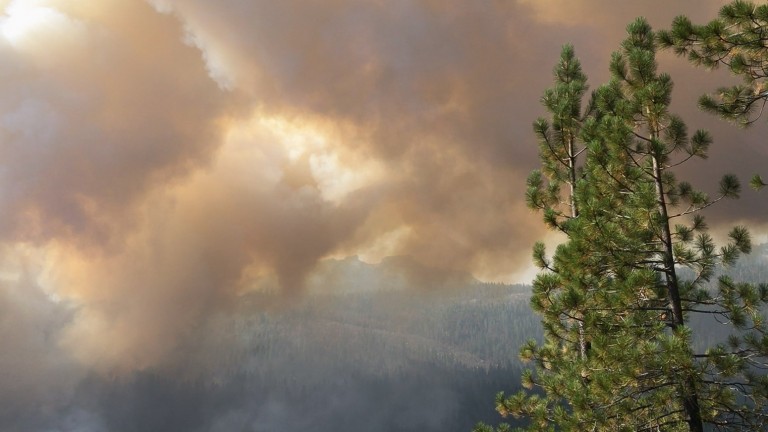More than 100 major wildfires are raging across the American West, including the largest blaze in California’s history. Deadly heat waves around the globe have toppled temperature records from Africa to the Arctic Circle. And torrential storms are battering the East Coast of the United States.
Climate change is almost certainly causing or exacerbating many of these events by creating drier, hotter conditions and throwing off the polar jet stream. And, scientists continue to remind us, it’s all just getting started.
Going to extremes: A study in Nature Communications this week found that the world may be entering a naturally warmer period, which could magnify the effects of human-influenced climate change. That could boost the odds of “extreme warm events” during the 2018-2022 period, particularly for sea surface temperatures.
Approaching “Hothouse Earth”: Such natural fluctuations will continue in the coming decades, nudging temperatures both up and down over relatively short periods, but climate research consistently points to a much warmer future over the long term. Indeed, a study in Proceedings of the National Academy of Sciences earlier this month warned there’s a “significant risk” of a “Hothouse Earth” scenario, in which crossing certain temperature thresholds could activate “self-reinforcing feedbacks” that drive temperatures higher still—such as the melting of permafrost that stores vast quantities of greenhouse gases. Such effects could make it increasingly difficult to stabilize the climate even if we manage to slash our carbon emissions.
High costs and lost lives: Increasingly common extreme weather events could very quickly strain emergency funds, insurance reserves, and other resources for dealing with these disasters (see “Missing climate goals could cost the world $20 trillion”).
Moreover, this pattern has already cost lives, and the toll is all but guaranteed to get worse. By 2100, nearly 75 percent of the global population will face life-threatening temperature and humidity levels at least 20 days a year if the world doesn’t significantly cut emissions, according to a Nature Climate Change paper last summer.
Worse and worse: While some have warned the world has reached a dangerous “new normal,” others say even that doesn’t capture it.
“A new normal makes it sound like we’ve arrived in a new position and that’s where we’re going to be,” Michael Mann, director of the Penn State Earth System Science Center, told PBS. “But if we continue to burn fossil fuels and put carbon pollution into the atmosphere, we are going to continue to warm the surface of the Earth. We’re going to get worse and worse droughts and heat waves and superstorms and floods and wildfires.”

